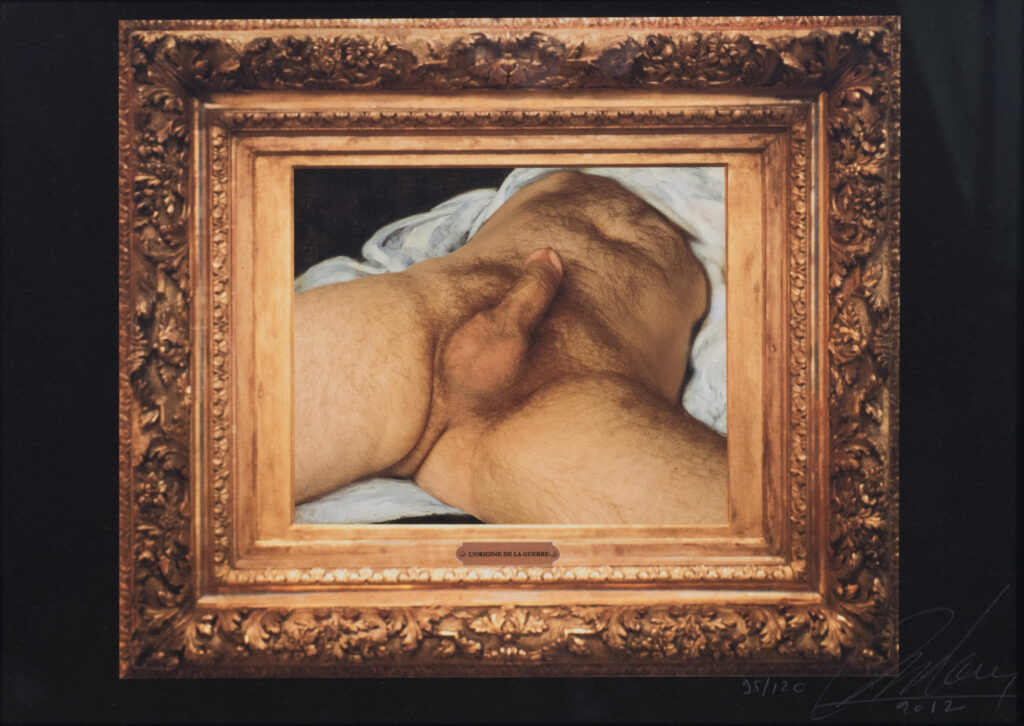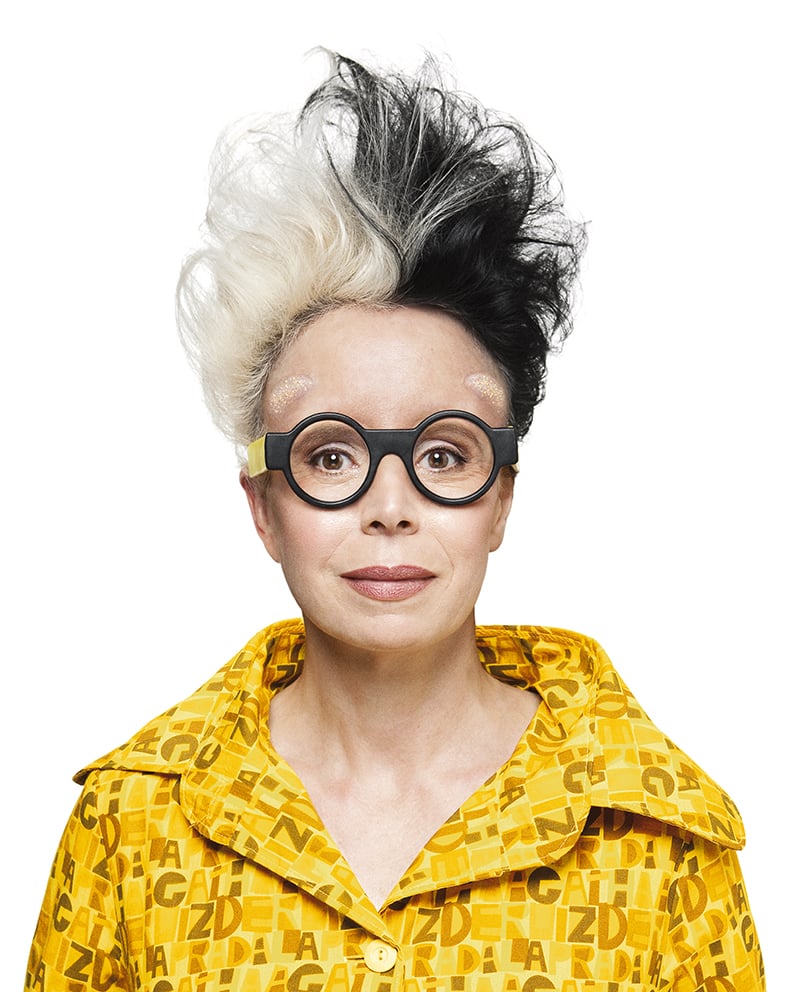Your currently viewing RAW Modern | Switch to RAW Contemporary
L'origine de la guerre, 1989 (2012 edition)
Catalogue essay by Blanche Llewellyn
“Happy birthday, dear Serge. Here is the genesis of war, a contemplation I hope will draw parallels to the genesis of the world, showcasing two facets of humanity. With all my friendship and an artist’s kiss. (Signed and dated: January 21, 20001222222).”
This dedication features on the reverse side of Orlan’s photograph, “L’origine de la guerre” (No 95 of 120, from the 2012 edition of the print, first conceived in 1989).
ORLAN created “L’Origine de la guerre” in response to Gustave Courbet’s painting, “l’Origine du monde,” (Musee D’Orsay, 1866). Courbet’s famous painting depicts in close-up and from a low angle the vulva and torso of a nude woman with her thighs spread apart. Having cut the original, larger canvas of a full-length nude, Courbet framed his work in such a way that nothing – feet, hands, arms, shoulders, neck, or head – is visible above the breasts (partially covered by a sheet). His model, and by implication woman, is thereby reduced to her sex.
Instead of portraying female anatomy, Orlan presents a photograph featuring the male sex framed by a facsimile of the original frame used on Courbet’s celebrated painting. In so doing, ORLAN offers a powerful critique of the imposed societal constructs that confine women’s bodies within the male gaze. ORLAN’s striking artwork can also be read as a comment on masculinity as a catalyst for universal violence, and more widely presents a radical position on the “battle” of the sexes. ORLAN’s intention is to challenge the societal norms surrounding the female body. Her success is self-evident; viewers typically express discomfort (and sometimes disgust) when confronted by her image; Courbet’s image, by contrast, more usually elicits a reaction of wry amusement.
In an interview for TV5 Monde, Orlan stated that this work symbolises “the other side of humanity, the other side of art,” thereby firmly advocating for a feminist perspective. “I sought to explore the implications of what would happen to a man, had we subjected him to the same alterations as we did with the female figure – the severing of head, arms, and legs – leaving only the torso and sex intact.”
A version of this photograph, from the 2012 edition, was exhibited at the Musée d’Orsay on the occasion of the “Masculin/Masculin: The Naked Man in Art, from 1800 to the Present” exhibition.
ORLAN’s L’Origine de la guerre undoubtedly deserves, and perhaps already has, an iconic status and is a milestone image of the feminist movement.

